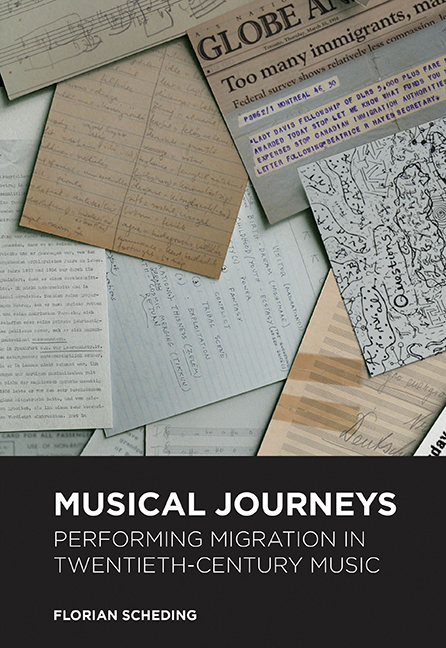Introduction: Mobility between Margin and Centre
Published online by Cambridge University Press: 19 March 2020
Summary
IN the summer of 1941, Hanns Eisler was busy composing in the small town of Woodbury, Connecticut. Eisler had decided to stay there with friends, fellow migrants Sylvia and Joachim Schumacher, in no small part for financial reasons, to escape expensive rent and urban life in New York. His wife, Louise, meanwhile, was earning money as a governess in Vermont. The Schumachers organised a room with an out-of-tune piano, rented from a gardener, who got on well with Eisler and enjoyed the composer's renditions of American folksongs.The peace and quiet of the countryside, alongside stimulating conversations with the Schumachers, resulted in a productive spell of compositions, which included the Woodbury Songbook, the film music to A Child Went Forth, and work on Fourteen Ways to Describe Rain. Eisler also wrote a set of piano variations there, which, as Christoph Keller has noted, he composed without a specific reason such as a commission or performance, unlike the other three works. Instead, it seems that the impulse for the work, written for Eisler's own instrument, the piano, can be located nearer to home, so to speak, in Eisler’s biography.
Keller speculates that discussions with the Schumachers about Beethoven’s variation technique, prompted by Sylvia Schumacher's practising of Beethoven’s C minor Variations, may have inspired Eisler to write his own set of variations. Indeed, Keller points out that the work follows compositional principles, which Eisler had discovered in Beethoven's variations. But the composition is not merely an exercise in invoking Beethoven. Instead, Eisler's commitment to the dodecaphonic technique of his erstwhile teacher, Schoenberg, is a hallmark of the work, while the recurrent first theme is itself based on the quintet from the first act of Mozart's Magic Flute, in which Papageno cannot speak because of a padlock that has been placed over his mouth. The compositional history of the work, too, is less than straightforward, and maps out how the musical-historical reference points intermingle with personal semantic layers. Later in the same year, 1941, Eisler added a second coda, later renamed the first finale, as a funeral music for his friend Grete Steffin, who had died in Moscow on 4 June while fleeing the Nazis.
- Type
- Chapter
- Information
- Publisher: Boydell & BrewerPrint publication year: 2019



